
Exploring travertine"s unique colors and formations in nature. "
Travertine is a sedimentary rock that forms from the precipitation of calcium carbonate in groundwater. It is primarily composed of calcite, a mineral that is also the main component of limestone. Travertine formation begins with the presence of a source of calcium carbonate, which is usually limestone or marble. These rocks contain high concentrations of calcium carbonate minerals. Groundwater, typically rich in dissolved carbon dioxide (CO2), percolates through the limestone or marble rocks. As the water moves through the rock, it dissolves small amounts of calcium carbonate.
The appearance and texture of travertine can vary depending on the specific conditions during its formation. Factors like impurities, mineral content, and the presence of other minerals or elements can contribute to the color variations and unique patterns found in travertine. Travertine is often associated with areas where there are hot springs or geothermal activity, as these environments provide the ideal conditions for the precipitation of calcium carbonate. Notable examples of travertine formations include the travertine terraces of Pamukkale in Turkey and the Mammoth Hot Springs in Yellowstone National Park, USA.
Travertine is a limestone that is formed by the activity of hot springs. In general, during the process of forming travertine deposits, hot water passes through the layers of carbonate rocks, especially limestone, and due to its acidity, dissolves the calcium carbonate in these rocks and forms it as a carbonate and bicarbonate solution when they move themselves to the ground. On the surface, due to the pressure drop, the decrease in the heat of carbon dioxide release as well as evaporation, calcite crystals are formed and deposited in thin layers on top of each other. The stability of the mentioned conditions and the continuation of the formation of calcite layers, causes the formation of uniform layers of porous calcium carbonate (travertine) whose thickness varies from a few centimeters to several meters and usually with a gentle slope on the old rock layers.
Changing the deposition conditions can cause an interruption in the formation of these layers, which results in a separation surface between successive layers of travertine. The total thickness of travertine layers usually varies from a few meters to several tens of meters. The presence of air hub bubbles as well as impurities of divalent iron, trivalent iron, manganese, silica, organic matter, etc. cause considerable color variation in travertine reserves in white, milky, cream to beige, pink, brown , Gold, yellow, lemon, red and green can be formed. In addition to the variety of colors that create a special beauty in these types, this type of stone can be cut from two different directions.
When the groundwater containing dissolved calcium carbonate reaches the surface or encounters a change in pressure or temperature, it releases carbon dioxide gas. This release of carbon dioxide causes the calcium carbonate to precipitate out of the water. The precipitation of calcium carbonate forms mineral deposits that accumulate over time. These deposits build up in layers, either directly on the surface or around the openings of springs and other water sources. The deposition and accumulation of calcium carbonate give rise to various travertine features, such as stalactites, stalagmites, and travertine terraces. The formation of these features is influenced by factors such as the flow rate of the water, the presence of organic matter, and the interaction with vegetation.
-
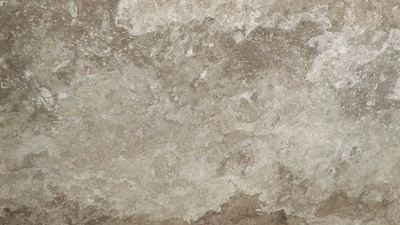
Travertine is a popular natural stone known for its aesthetic appeal and durability. Its unique veining and warm colors make it a preferred choice in luxury architecture. The stone is resistant to scratching and chipping, making it suitable for high-traffic areas like flooring and countertops. However, certain varieties may have limited availability, impacting sourcing options. Travertine"s porous nature requires regular sealing to prevent stains from spills, particularly acidic substances. While it offers excellent heat resistance and thermal insulation, making it ideal for hot climates, its softness compared to other stones like granite can lead to scratches and dents. Maintenance involves using pH-neutral cleaners and protective measures to preserve its appearance. Despite being considered a luxury material, recent market changes have made travertine more accessible due to increased supply and reduced prices.
This has expanded its use in various applications, including outdoor spaces and ceremonial halls. Overall, travertine combines elegance with practicality but requires careful handling and maintenance. "
-
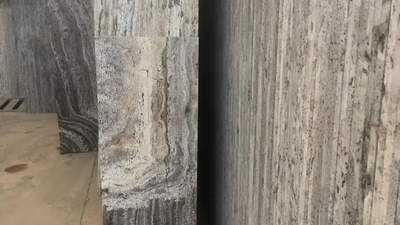
Leather travertine features a textured surface that mimics the look and feel of leather, achieved through specialized manufacturing techniques. This finish enhances the stone"s natural beauty, adding depth and character to various architectural applications. The unique texture creates an inviting ambiance, making it suitable for flooring, wall cladding, and countertops. Two primary cutting methods are used: Veincut, which exposes the stone"s natural veining for a contemporary look, and Crosscut, which offers a more organic appearance by highlighting color variations. The finishing process is crucial as it determines the final aesthetic; leather travertine is treated to maintain its matte finish while ensuring durability. Regular maintenance is essential to preserve its appearance and prevent staining. Leather travertine is ideal for both residential and commercial spaces, particularly in areas requiring slip resistance like bathrooms and outdoor patios.
-
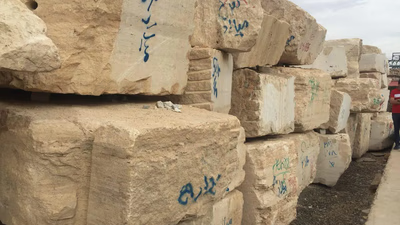
Travertine stones are versatile and available in various dimensions, making them suitable for numerous applications. Commonly used in both residential and commercial spaces, travertine tiles enhance aesthetics with their durability and elegance. Standard tile sizes include 12" x 12", 18" x 18", and 12" x 24", catering to different design needs. Larger travertine slabs, typically ranging from 2 cm to 3 cm in thickness, are ideal for countertops and tabletops, providing a luxurious surface that is heat-resistant. For outdoor use, travertine pavers are thick and durable, available in sizes like 6" x 12" and 24" x 24", perfect for patios and walkways due to their slip-resistant properties. Travertine mosaics offer intricate design possibilities with smaller pieces that can be arranged into patterns for backsplashes or decorative accents. The adaptability of travertine dimensions allows for creative solutions in both interior and exterior applications, ensuring functionality while maintaining visual appeal.
-
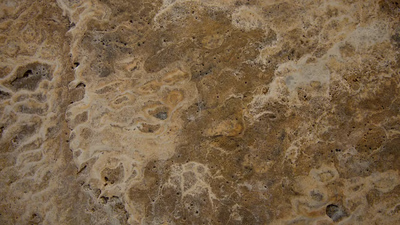
Travertine is a versatile stone known for its unique textures, including natural, honed, brushed, polished, and tumbled finishes. The natural texture features pits and voids from gas bubbles formed during its creation, giving it an earthy charm. Honed travertine offers a smooth, matte finish with minimal visible pores for a contemporary look. Brushed travertine retains its natural voids while providing a textured surface that adds depth. Color variations in travertine range from ivory to caramel, with rarer colors like brown and gold commanding higher prices due to their limited availability. The stone"s durability and resistance to chemicals and thermal changes make it suitable for various environments; however, caution is advised in cold climates due to potential freeze-thaw damage. Polished travertine boasts a glossy finish that enhances its color and veining, ideal for formal settings. Tumbled travertine presents an aged appearance, perfect for rustic designs.
Understanding these characteristics can aid in selecting the right type of travertine for specific applications. "
-

Travertine has been a vital building material in West Asia for centuries, prominently featured in historical sites like Petra and Persepolis. Its durability and aesthetic appeal align with the region"s architectural heritage, making it a preferred choice for mosques, palaces, and traditional houses. The Middle East ranks among the top producers of decorative stones globally, with Iran being a significant contributor, producing 10 to 15 million tons annually. The region"s travertine mines hold an estimated capacity of 60 billion tons, with over 75% extracted from Iranian sources. This stone is not only valued for its quality but also for its cultural significance in religious architecture. Contemporary projects in cities like Dubai and Riyadh continue to utilize travertine, enhancing modern designs with its timeless elegance. The local availability of travertine supports a sustainable supply chain while contributing to the regional economy.
-
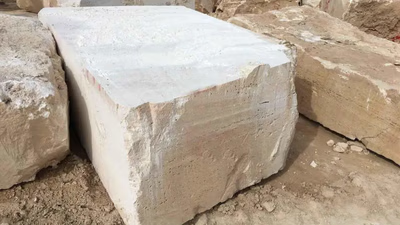
Travertine is a versatile and durable natural stone that plays a crucial role in luxury architecture and decoration. Its unique aesthetic, characterized by earthy tones and distinct veining patterns, allows it to complement various design styles, from modern to traditional. Commonly used for exterior cladding, flooring, and wall coverings, travertine enhances the elegance of high-end residential and commercial spaces. Its durability makes it suitable for high-traffic areas, while its thermal properties contribute to energy efficiency. The stone"s sustainability is also noteworthy; it is a natural material with environmentally friendly extraction processes. Travertine"s ability to seamlessly connect indoor and outdoor spaces adds to its appeal in luxury designs. With proper maintenance, travertine retains its beauty over time, making it a reliable choice for long-term investments in architecture.
-
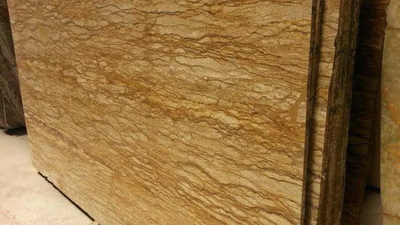
Travertine and marble are distinct natural stones with different properties and aesthetics. Travertine, a sedimentary rock, features earthy tones and a rustic appearance, making it ideal for Mediterranean designs. It is softer and more porous than marble, which is a metamorphic rock known for its elegance and durability. Marble offers a wider range of colors and veining patterns, often associated with luxury in both classic and contemporary settings. While travertine is suitable for low-moisture areas like living rooms, marble excels in high-moisture environments such as bathrooms due to its lower porosity. Both stones require regular maintenance, including sealing to prevent stains. Travertine is generally more affordable than marble, appealing to budget-conscious consumers seeking natural stone aesthetics. However, marble"s perceived value can enhance property appeal.
Understanding the differences between these stones can help consumers make informed choices based on design needs and budget constraints. "
-
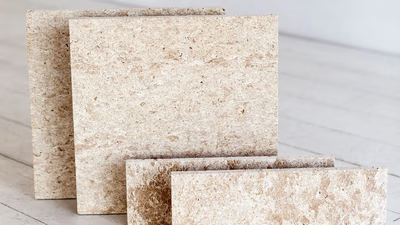
Travertine, a sedimentary rock formed from calcium carbonate, has a rich historical significance, particularly in ancient Rome where it was extensively used in iconic structures like the Colosseum and the Roman Forum. Its durability and aesthetic appeal made it synonymous with Roman architecture. High-quality travertine is primarily sourced from Italy, especially Tivoli, but also from Turkey, Iran, Mexico, Peru, and the United States. The stone"s use extended beyond Rome to ancient Persia and Mesopotamia, exemplified by its presence in structures like Persepolis. After a decline during the medieval period, travertine saw a resurgence during the Renaissance and Baroque periods as architects favored its workability and beauty. Notable examples include the Trevi Fountain in Rome. Travertine"s versatility allows it to be used for facades, flooring, and interior decorations in modern architecture. Its enduring popularity is reflected in contemporary projects ranging from luxury homes to public spaces. Additionally, travertine plays a vital role in architectural conservation efforts aimed at preserving historical sites and ensuring the longevity of this cherished material.
-
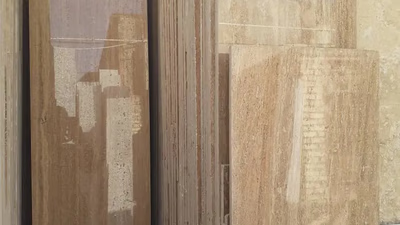
Travertine is a sedimentary rock formed through the precipitation of calcium carbonate from groundwater, primarily composed of calcite. Its formation begins with limestone or marble, which contain high concentrations of calcium carbonate. Groundwater rich in dissolved carbon dioxide percolates through these rocks, dissolving small amounts of calcium carbonate. The appearance and texture of travertine vary based on impurities and mineral content during its formation. Typically associated with hot springs or geothermal activity, travertine deposits are formed when hot water passes through carbonate rocks, leading to the precipitation of calcite crystals as conditions change. This process results in layered deposits that can range from a few centimeters to several meters in thickness. The presence of air bubbles and various impurities contributes to the diverse color variations found in travertine, including white, cream, pink, brown, and green hues. Notable travertine formations include Pamukkale in Turkey and Mammoth Hot Springs in Yellowstone National Park. The unique features of travertine such as terraces and mineral deposits are influenced by water flow rates and organic matter interactions.









